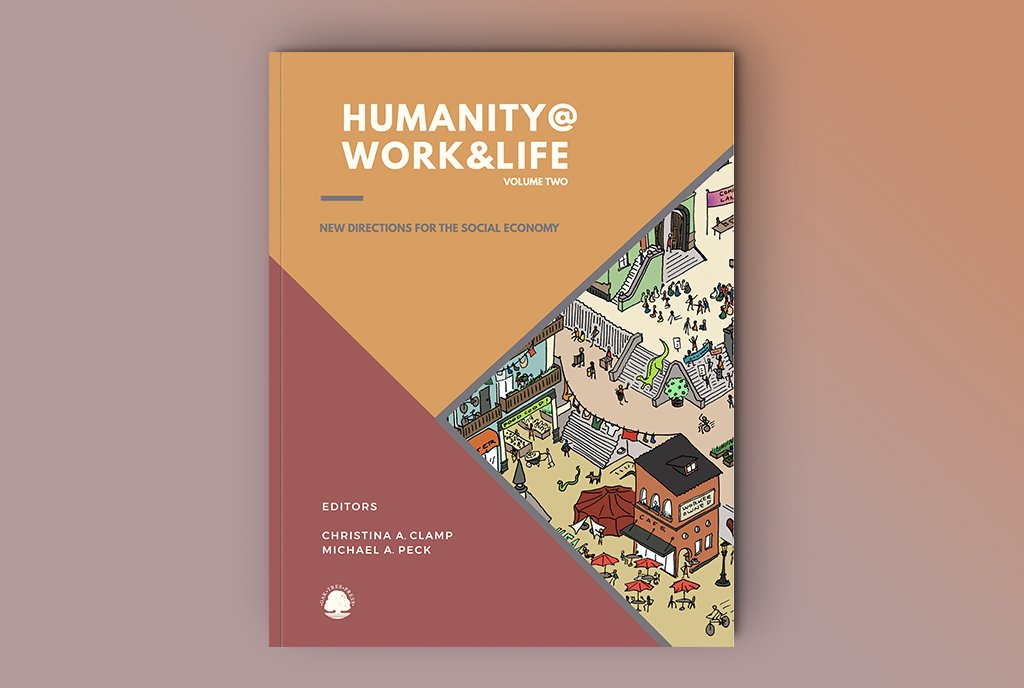
Recent worker polling confirms that even in a low-unemployment economy, workers feel vulnerable—and they feel that public policy does not serve them, including the nation’s system of workforce development. For example, a 2024 report indicates that “unemployed workers found it more difficult than those employed to access job training and job search workforce development services.”
The need to restructure the US national public workforce system is clear. Securing prosperous, fair, and equitable futures for workers requires a new paradigm to transform the country’s public workforce development system.
At the foundations where we work—the Conrad N. Hilton Foundation and the LIFT Fund—we recognize that an inclusive economy requires supporting worker voice and power, while ensuring overall alignment with employer needs and interests. Drawing from field examples, worker perspectives, and public workforce system data, we believe the US workforce system is ripe for transformation. Listening to workers and ensuring that their voices shape the future state of programs and policies is paramount.
The need to restructure the US national public workforce system is clear.
There is some good news. The last few years have ushered in a wave of reform. Across philanthropy and among the public and private sectors, we’ve seen investments that better meet the needs of workers and improve job quality across sectors. Employer-led workplace innovations are being grounded and realized through leveraging worker perspectives. Examples across the country of innovative worker-owned and -led businesses are changing how employees and employers build and operate mutually beneficial organizations.
This progress is real and inspiring but also fragile and incomplete.
People Left Behind
Many people who wish to work are still unable to find employment, especially young adults seeking to enter the workforce who face challenges breaking into careers that foster economic mobility. In fact, recent research from Measure of America shows that almost 4.7 million young people in America (ages 16 to 24) are “disconnected”—neither in school nor employed.
Even amid low rates of official unemployment, millions of Americans are locked out from receiving the benefits of full-time work and a good job due to overlapping structural barriers and discrimination. Members of vulnerable groups continue to face systemic challenges that correlate with race, ethnicity, gender, age, and geography.
For instance, Black workers consistently face higher unemployment than White workers with the same educational attainment, skills, or residential location, regardless of other factors. Additionally, occupational segregation results in Black and Latinx workers being overrepresented in dangerous, underpaying jobs with few benefits, while women of color disproportionately face the worst work situations.
Almost 4.7 million young people in America (ages 16 to 24) are “disconnected”—neither in school nor employed.
The Need for Transformation
As we consider the future state of the US public workforce system, it is important to remember that the system has undergone considerable shifts before. Historically, the United States once leveraged public policy to employ hundreds of thousands of people on critical infrastructure and public arts projects, retrained workers displaced by shifting economic conditions, supported measures for workers to have a greater say in the workplace, and established a national network of labor market information systems among other innovations.
In the 1970s, the workforce system under the Comprehensive Employment and Training Act (CETA) was largely locally run through direct federal funding to local governments.
Workforce services under CETA—which included on-the-job training, classroom training, and public service employment—were targeted to populations with low incomes, welfare recipients, and disadvantaged youth. The subsequent Job Training Partnership Act (JTPA) framework focused on workforce programs serving people facing barriers to employment. It mandated that a percentage of funding be used for workforce training purposes.
In the 1990s, public policy governing workforce development steered the system toward universal access to services responsive to the demands of local area employers.
Today, the number of adults being served by the public workforce system across its major programs funded by the current Workforce Innovation and Opportunity Act (WIOA) has declined notably since 2017.
Since 2001, public funding for workforce development programs has also declined significantly. What’s more, for people facing the greatest challenges to getting and keeping a job, the public workforce system routinely fails to deliver family-sustaining jobs, and indeed, many workers are stuck in a “low-wage trap.”
Sign up for our free newsletters
Subscribe to NPQ's newsletters to have our top stories delivered directly to your inbox.
By signing up, you agree to our privacy policy and terms of use, and to receive messages from NPQ and our partners.
We have seen the impact of elevating worker voices.
Recent research, for example, indicates that few very women living on low incomes get access to public workforce training programs that have a proven track record. Research also indicates that women living on very low incomes experience nominal wage growth after participating in current WIOA-funded workforce programs.
Among men, data indicate that workforce programs struggle to address persistent wage gaps across racial groups. As elevated by experts in the field, workforce system policies must work in tandem with other policies to address structural challenges faced by workers.
So, where do we go from here?
A Path Forward Emerges: Two Community Examples
Workers tell us that they believe that employers and the federal government have roles to play in delivering access to good jobs and promoting worker voice in the workplace. Polling reveals that workers prioritize federal workforce development initiatives to ensure access to “good quality job(s) to support their families.”
We have seen the impact of elevating worker voices in practice. For example, in the rural Western North Carolina community of Morganton, The Industrial Commons (TIC) is revitalizing the local economy through their community-owned, for-profit businesses that support mutual growth and reinvestment.
Since 2015, TIC has created quality jobs, supported over 2,500 workers, and invested over $15 million in the region through various initiatives, including converting businesses to employee ownership and providing extensive workplace training programs.
Meanwhile, in Los Angeles, the Los Angeles Black Worker Center (LABWC) exemplifies how workforce development initiatives can address specific employment challenges Black workers face. LABWC’s Workforce Equity Demonstration projects create pathways for Black workers to secure career-track public sector jobs, demonstrating a commitment to long-term economic stability while also working to reform how young workers, in particular, access careers in civil service. The LABWC also provides free legal aid through its Legal Clinic and facilitates peer-to-peer support through its Stewards Council, enabling workers to address workplace issues collectively.
Moving from Local Examples to Policy
How might the US public workforce development system replicate the approaches used by these community-based examples?
The examples from North Carolina and California reveal a common focus on listening to workers and ensuring their say in the workplace. We believe that to create a public workforce system that listens to workers, ensures worker voice in the workplace, and aligns with both worker and employer needs, foundations and other stakeholders should take the following steps:
- Invest in a workforce development system that centers workers’ voices.
More philanthropic investment and alignment requires centering worker perspectives and aspirations. We know that parallel and coordinated efforts at local, state, and national levels will be necessary to ground this work in local communities, elevate voices from the field, and advance supportive local and state policy.
- Create a shared goal of systems change.
A systems-change orientation requires a broad definition of workforce development and what underpins our current systems. Components for advancing a shared vision for systems change may include many intersecting elements—research, public policy, organizing, movement development, narrative change, and more.
- Convene diverse stakeholders with the intent to listen and build.
The community examples featured here are just the tip of the spear of workforce development innovation. Across the country, workers and employers are crafting locally relevant solutions that put workers at the center. A transformed US workforce system should include steps to convene diverse stakeholders with an intent to listen and build on their collective wisdom and learnings to identify policy, program, and ecosystem improvements.
The current US system leaves far too many people behind. To change this, it is critically important for philanthropy, nonprofits, and stakeholder groups to work together to advance a transformative vision of a US workforce system—one that puts workers at the center and sees them holistically.
With the steps outlined here, we can begin creating a national public workforce system that meets both employer needs and worker aspirations.











